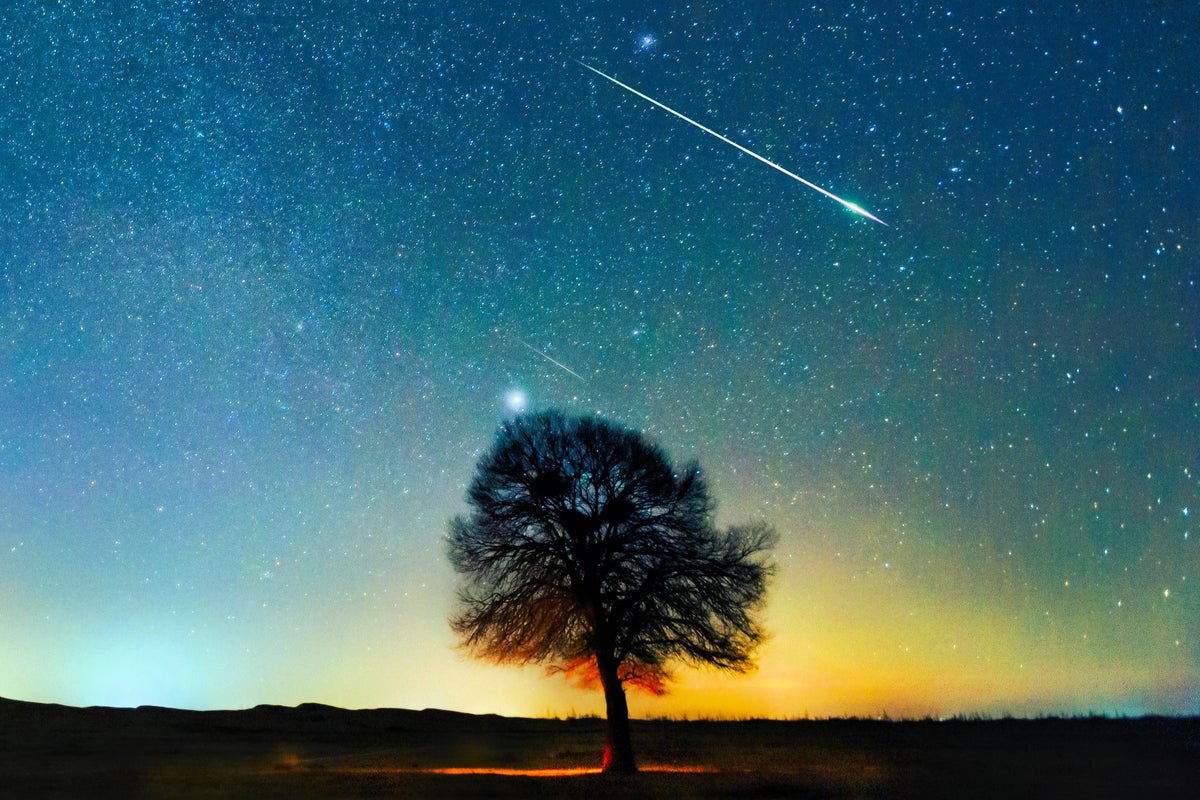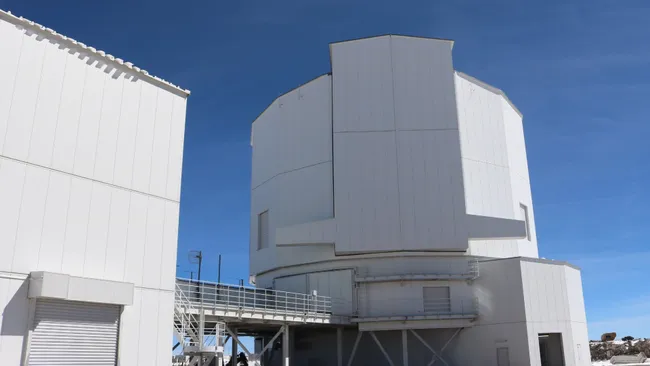-
NASA's APEP Mission
8th April 2024
On April 8, 2024, the Atmospheric Perturbations around Eclipse Path (APEP)mission was conducted by NASA during the total solar eclipse. This involved launching three sounding rockets from the Wallops Flight Facility in Virginia to study the ionosphere’s response to the eclipse. To observe change in electric and magnetic fields, density, and temperature , rockets were launched sequentially before, during and after the eclipse peak, at altitude of approximately 410-413 km.The data gathered helps refine models predicting ionospheric disturbances, which can affect communication and navigation systems. This mission follows earlier tests conducted during the 2023 annular solar eclipse to explore similar atmospheric phenomena.

Three APEP sounding rockets and the support team after successful assembly. Credit: nasa.gov
References
NASA. "NASA to Launch Sounding Rockets into Moon’s Shadow During Solar Eclipse." [ nasa.gov]
-
Lyrid Meteor Shower
21st April, 2024
The Lyrid Meteor Shower in 2024 peaked on the night of April 21-22. The Northern Hemisphere had the best opportunities to view these meteor showers.Originating from the debris of Comet C/1861 G1 Thatcher, it is well-known for its bright meteors and occasional fireballs. Lyrids have long been one of the oldest recorded meteor showers.Under optimal conditions, observers saw about 10-20 meteors per hour at the peak. The best time to watch was after midnight, with meteors radiating from the constellation Lyra, near the bright star Vega, though they appeared across the sky.

April Meteor Shower. Credit: independent.co.uk
References
time and date. "April Meteor Shower." [ timeanddate.com]
-
Rocket Lab’s Electron Launch
2rd April, 2024
On Apr 23, 2024 Rocket Lab launched an Electron rocket from New Zealand carrying NASA’s Advanced Composite Solar Sail System(ACS3) and South Korea’s NEONSAT - 1 satellite. NEONSAT-1, an Earth-Observation satellite developed by KAIST, was deployed into a 520 km orbit to support national safety and disaster monitoring. NASA's ACS3, a CubeSat with an 80-square-meter solar sail, was placed in a higher 1,000-kilometer orbit to test sunlight-based propulsion and lightweight composite booms for future space missions. This demonstration seeks to advance solar sail technologies for applications in asteroid reconnaissance, solar observations, and space weather monitoring.

Rocket Lab’s Electron Launch. Credit: wp.com
References
SPACE.com. "Electron launches South Korean imaging satellite and NASA solar sail." [ spacenews.com]
-
World's Highest Observatory: University of Tokyo's TAO Begins Unveiling Cosmic Mysteries
30th April, 2024
On April 30, 2024, The University of Tokyo Atacama Observatory (TAO, the world’s highest astronomical site, officially began its operations. It is located at the top of Cerro Chajnantor in Chile at an altitude of 5,640 meters(18,500 feet).Equipped with 6.5-meter optical- infrared telescope, this state of the art facility, aims to study galaxy evolution and exoplanetary systems under optimal observational conditions afforded by the region’s sparse atmosphere and low moisture levels.TAO houses two advanced instruments: SWIMS, to analyze early galaxies and cosmic dust formation, and MIMIZUKU, for investigating primordial star-forming disks. The project, first envisioned 26 years ago, overcame technical, political, and cultural challenges, incorporating indigenous and governmental input to ensure ethical and safe construction. It represents a leap forward for infrared astronomy, complementing other ground- and space-based observatories.

The University of Tokyo Atacama Observatory. Credit: futurecdn.net
References
SPACE.com. "The highest observatory on Earth sits atop Chile's Andes Mountains — and it's finally open." [ space.com]